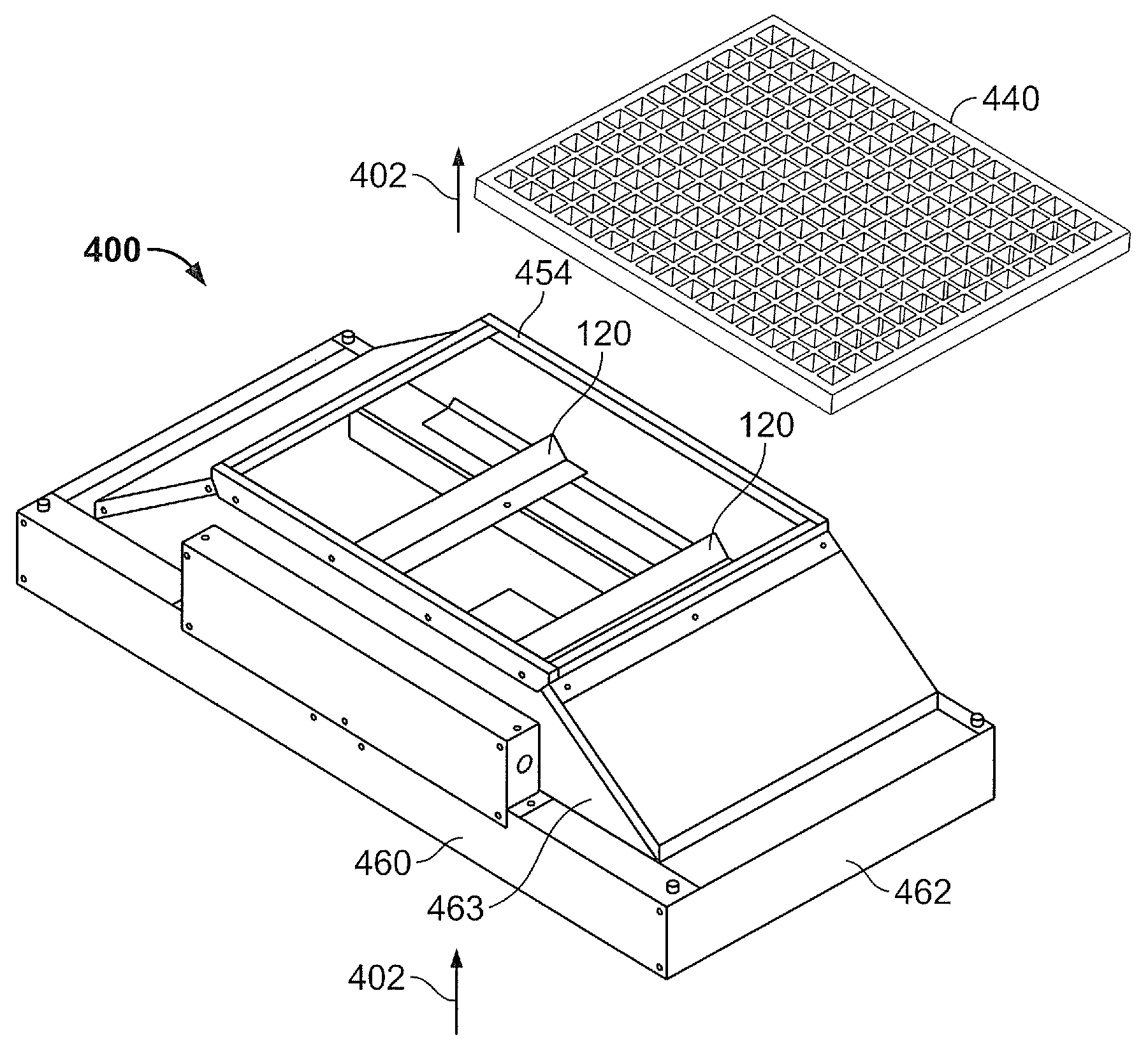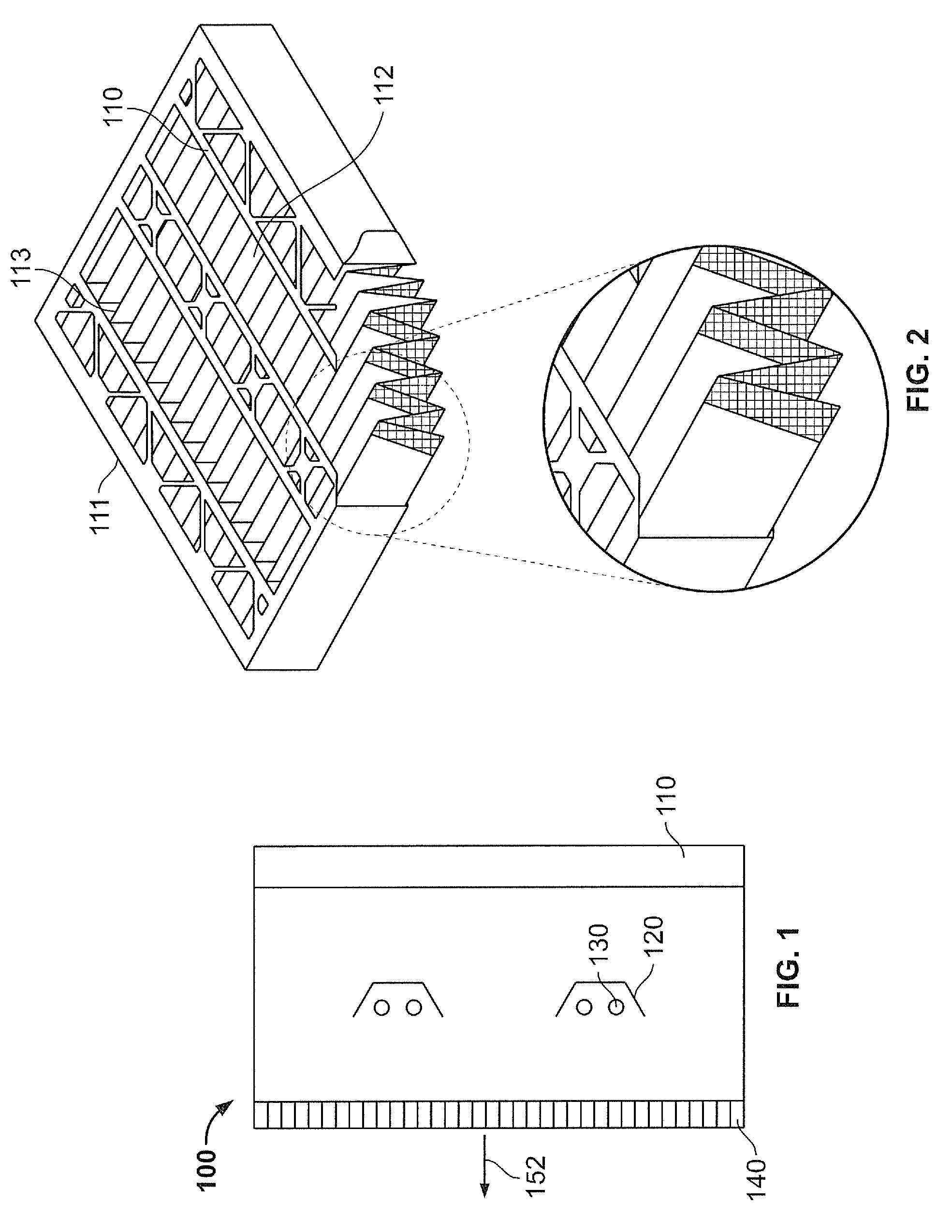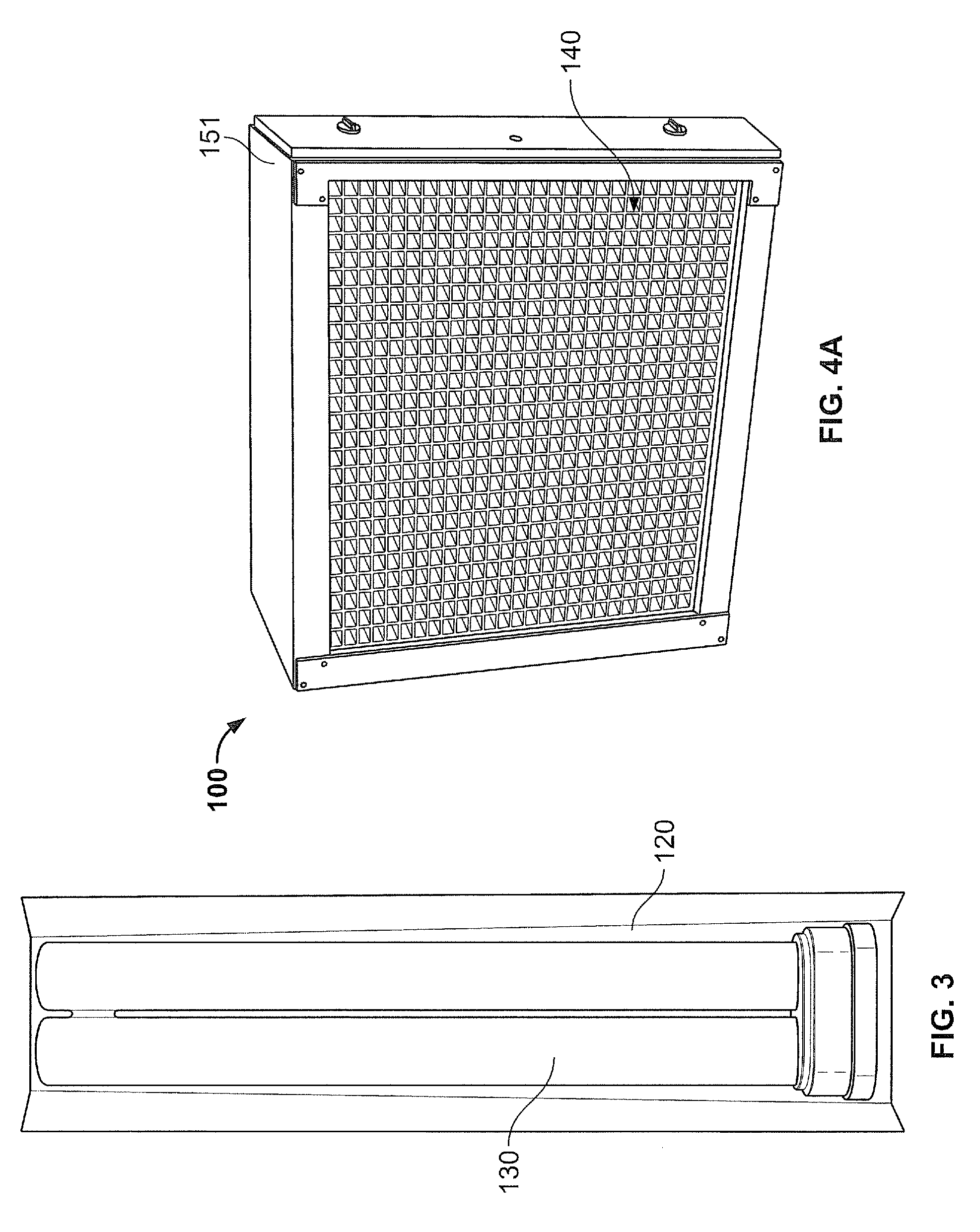System and method for photocatalytic oxidation air filtration using a substrate with photocatalyst particles power coated thereon
a technology of photocatalytic oxidation and air treatment, which is applied in the direction of physical/chemical process catalysts, lighting and heating apparatus, heating types, etc., can solve the problems of not being able to achieve the exact mechanism, not being able to institutionalize, and slow process kinetics,
- Summary
- Abstract
- Description
- Claims
- Application Information
AI Technical Summary
Benefits of technology
Problems solved by technology
Method used
Image
Examples
Embodiment Construction
[0045]The present invention is directed to a system for and a method of making a PCO air filtration system using a substrate with titanium dioxide powder coated thereon. Because of the inventive powder coating process described herein, the inventive PCO air filtration system is more durable and has a longer lifetime than prior art PCO air filtration systems using substrates with titanium dioxide conventionally coated thereon using a liquid coating process.
[0046]The inventive method of powder coating titanium dioxide onto a substrate of a PCO unit presents advantages over conventional liquid coatings. For one, powder coating titanium dioxide onto a substrate of a PCO unit allows for better control over the coating thickness on the substrate and over the uniformity of the coating thickness.
[0047]In addition, the performance characteristics of a titanium dioxide coating layer formed from a powder coating process match or exceed the characteristics achieved from conventional solvent bas...
PUM
| Property | Measurement | Unit |
|---|---|---|
| particle size | aaaaa | aaaaa |
| diameter | aaaaa | aaaaa |
| diameter | aaaaa | aaaaa |
Abstract
Description
Claims
Application Information
 Login to View More
Login to View More - R&D
- Intellectual Property
- Life Sciences
- Materials
- Tech Scout
- Unparalleled Data Quality
- Higher Quality Content
- 60% Fewer Hallucinations
Browse by: Latest US Patents, China's latest patents, Technical Efficacy Thesaurus, Application Domain, Technology Topic, Popular Technical Reports.
© 2025 PatSnap. All rights reserved.Legal|Privacy policy|Modern Slavery Act Transparency Statement|Sitemap|About US| Contact US: help@patsnap.com



